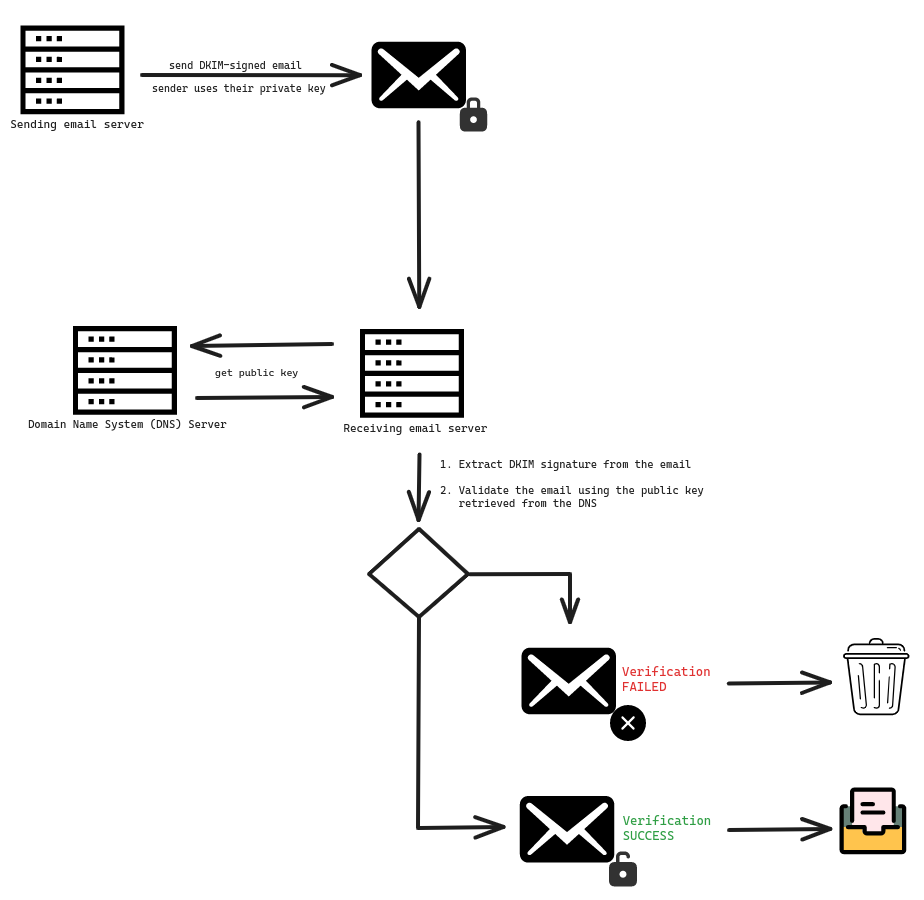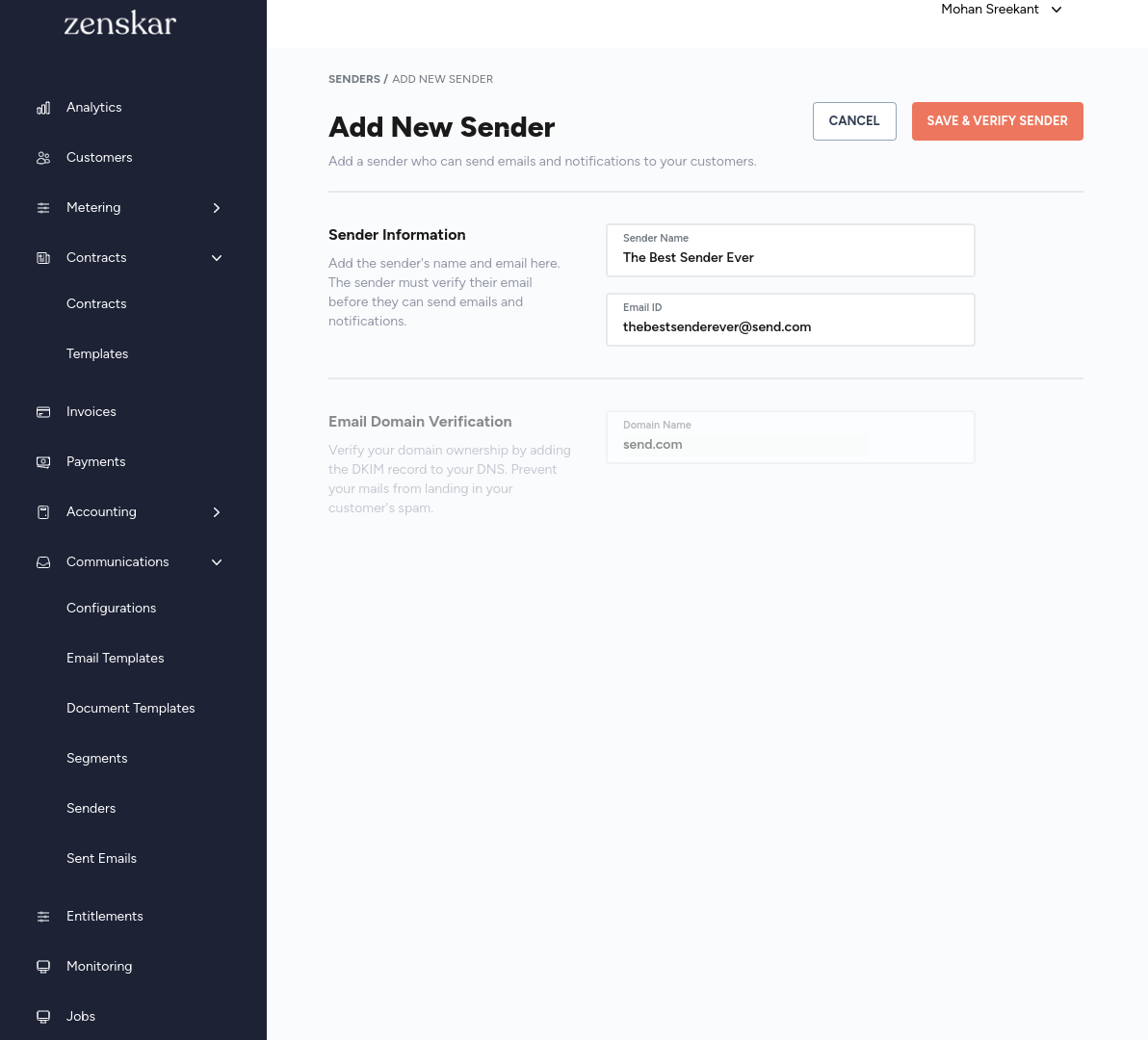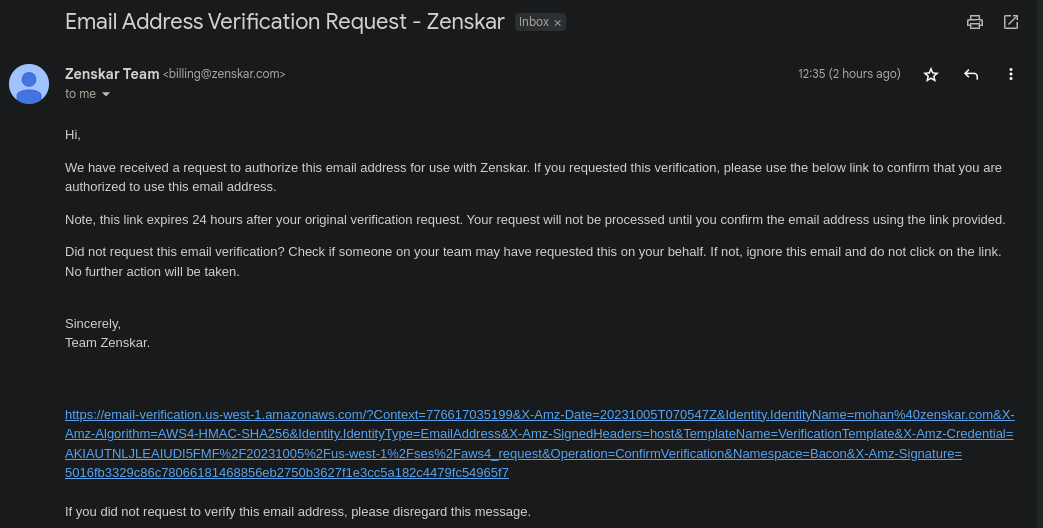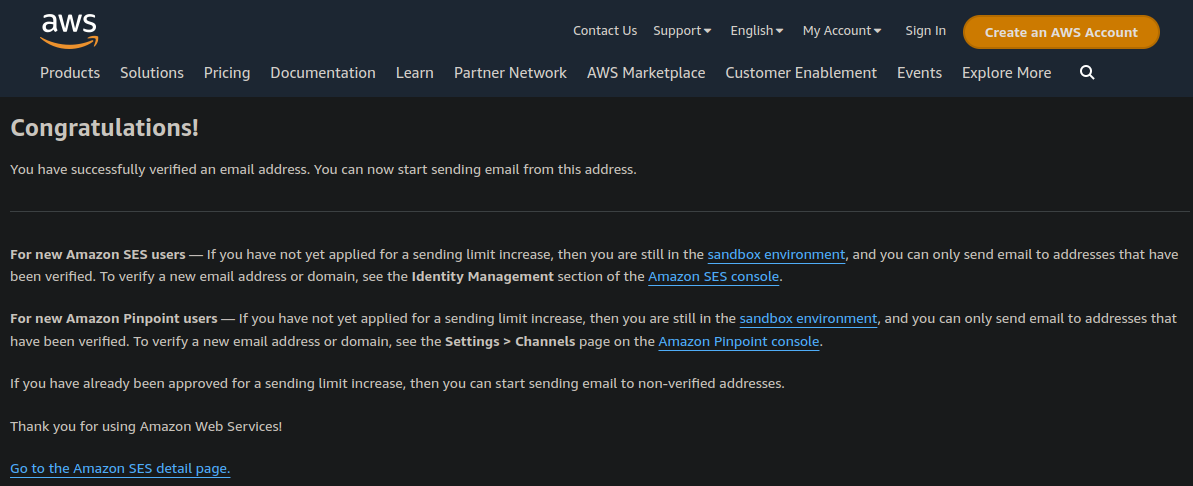Add and authenticate senders who can send emails and notifications to your customers.
Definitions
Sender: a user authorized to send emails and notifications to your customers.
🐕This guide will help you to:
- set up senders who are authorized to send emails and notifications to your customers
- verify your domain ownership.
🚧 Critical background information
📖 Learn about email authentication, DKIM, DNS, and more.
Sending emails and notifications to your customers is a sensitive activity. Cyber adversaries can impersonate organizations and forge emails to target unsuspecting victims. Email forgery is also known as email spoofing.
🤔 What is email authentication?
Email authentication is a collection of techniques used to ascertain that the emails sent from a specific server are not forged. It eliminates the possibility of a malicious actor impersonating an organization to send spam or phishing emails.
Zenskar takes the threat of email forgery seriously and employs DomainKeys Identified Mail (DKIM) email authentication standard to defend against email forgery. The other commonly used email authentication standards are SPF and DMARC.
🤔 How does DKIM work?
DKIM authentication uses public-key cryptography , also called asymmetric cryptography, to secure emails. DKIM leverages the following:
- Private keys: secret keys visible only to the domain owner. These keys are used by the sending email server to digitally sign an email.
- Public keys: keys published in Domain Name System (DNS) records for the receiver. These are retrieved by the receiving email server to verify the authenticity of the email.
Your private keys
Zenskar, on your behalf, sends emails and notifications to your customers. To make this possible, we store and handle your private keys. We employ enterprise-grade security mechanisms to secure the private keys we handle.
Your public keys
Zenskar will provide you all the necessary records to be updated in your DNS. These records will make it possible for the receiving email servers to retrieve the necessary public keys for verification.
The following diagram shows an easy-to-understand depiction of the DKIM mechanism:

🤔 Adding DKIM records to DNS
A DNS record for DKIM can be:
- CNAME: used if the DNS record is a pointer to a key.
- TXT: used if the DNS record contains a key.
Zenskar uses Amazon SES email service. Amazon SES uses pointers to keys. Therefore, CNAME records must be added to your DNS to enable DKIM.
For example, to enable DKIM for example.com domain, the following records will be required:
| Type | Name | Value |
|---|---|---|
| CNAME | <selector 1>._domainkey.example.com | <prefix 1>.dkim.amazonses.com |
| CNAME | <selector 2>._domainkey.example.com | <prefix 2>.dkim.amazonses.com |
| CNAME | <selector 3>._domainkey.example.com | <prefix 3>.dkim.amazonses.com |
Caution
<selector X>and<prefix X>used in the example above are placeholders. The DKIM records you download from Zenskar will have real data. Caution must be exercised while copying and pasting the data to your DNS. Any change in the data will result in verification failure and wasted time.
Add a new sender
⚙️ Step 1: Add a sender
- Navigate to Communications > Senders and click on the + ADD NEW SENDER button.
- In the ADD NEW SENDER page, enter the sender name and email Id.
- Click on SAVE & VERIFY SENDER button.
- An email with a verification link will be sent to the email ID supplied.

Sender email verification
The sender will receive an email with a verification link.

Clicking on the link will complete the verification process.

Verification link expiry
The verification link in the email expires 24 hours after your verification request. If a link expires, go to Edit Sender page and click on RESEND VERIFICATION EMAIL.
Verifying status of a sender
- Navigate to Communications > Senders.
- Each sender in the sender list displayed will have one of the following tags:
- PENDING: if the email verification is pending.
- VERIFIED: if the email verification has been completed successfully.

⚙️ Step 2: Domain ownership verification
After the completion of Step 1, you will be automatically taken to the EDIT SENDER page. If you did not download the DKIM records, you may navigate to the Edit Sender page.
- Download the DKIM records by clicking the DOWNLOAD DKIM RECORD button.
- Add the DKIM records to your DNS.
Important
You must possess administrator access to your domain registrar web portal to add DKIM records to DNS. If you do not have such access, ask the web administrator of your organization to complete this action.

Domain ownership verification is critical
Domain ownership verification can take 24 hours or more. The verification can fail, and the process may need to be started again. This can cause significant delays.
Senders can send emails even when your domain ownership has not been verified. However, it is highly likely that your emails may end up in your customer's spam folder.
Therefore, it is critical to get your domain ownership verified with the slightest delay.
The procedure to update DKIM records in DNS will vary depending on your domain registrar:
GoDaddy quirks
GoDaddy automatically appends the domain to the host value.
Type Name Value CNAME <selector 1>._domainkey.example.com <prefix 1>.dkim.amazonses.com Therefore, while adding the above record, enter only
<selector 1>._domainkeyin the Host field.
Edit sender details
To edit the details of an existing sender, navigate to Communications > Senders. Click on the row corresponding to the sender whose details you wish to edit.
What can be edited?
Currently, only the name of the sender can be edited.
